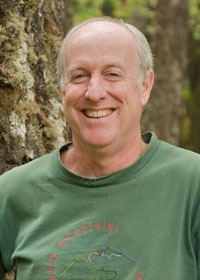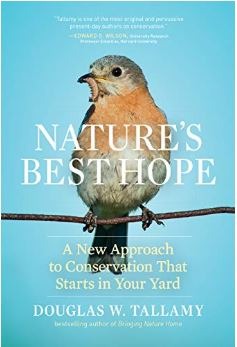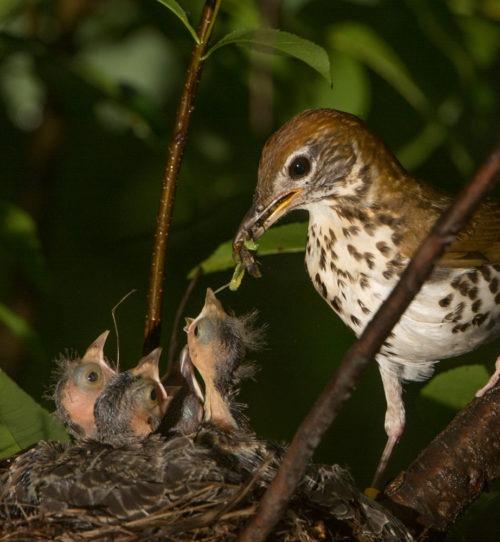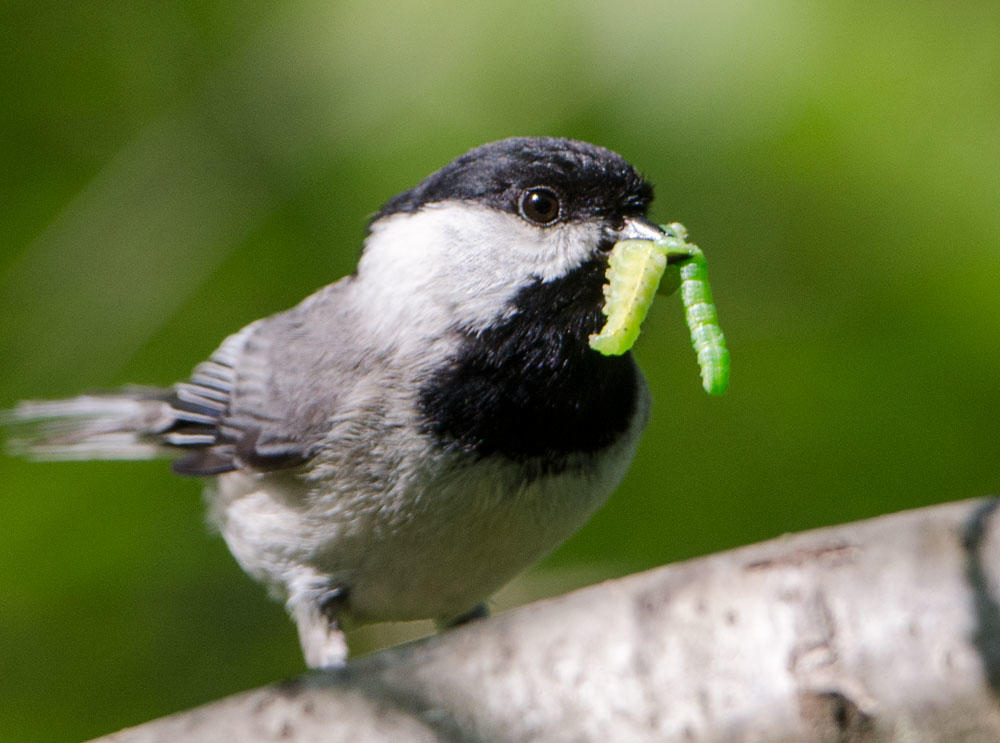Planting for Nature’s Best Hope
Teddy Roosevelt stood on the rim of the Grand Canyon in 1903 and, looking out across the country’s 1.2-million-acre National Park, made an impassioned plea to the American people. “Leave it as it is.”
“You cannot improve on it,” the president went on. Award-winning conservationist Doug Tallamy wants you to follow Roosevelt’s advice in your own backyard. “Your own yard is a wildlife preserve that represents the last opportunity we have for sustaining the plants and animals that sustain us,” he explains, acknowledging that you may need to make a few changes to make it a more hospitable habitat for insects, birds and other wildlife if you have a yard and non-native plantings.
Tallamy is a professor in the Department of Entomology and Wildlife Ecology at the University of Delaware. The author of four books and over 100 research papers, his focus is exploring the many ways that plants and insects interact and how those interactions influence our ecosystem.
“Life as we know it depends on insects,” he explained, speaking last week during a keynote session of the online gardening class series Grow Native. Insects eat plants, only to be eaten themselves by birds and small animals who then become food for even larger creatures – each of the members of an interdependent network of producers and consumers who pass energy on in complex food webs that increase the stability of the ecosystem.
“Plants are not decorations,” Tallamy insists. Nature’s alchemy begins when bugs feed on plants that have transformed energy from the sun into matter. Those plants are the subject of his new book, Nature’s Best Hope.
Today, only 5% of the lower 48 states are close to their original ecological condition. Private land makes up 86% of the country — 599 million acres. “Man has carved up the natural areas, leaving each piece too small to sustain ecosystems,” Tallamy explains. He asks us to imagine reassembling those isolated fragments of land so that nature can rebuild her specialized relationships.
To that end, Tallamy has launched what he calls “the largest cooperative conservation project ever conceived or attempted.” Called Homegrown National Park, it is a “grassroots collective of individual homeowners dedicated to restoring biodiversity and ecosystem function by planting native plants and creating new ecological networks” in their own backyards. The movement’s goal is to convert 20 million acres of native plantings in the U.S.- approximately half of the green lawns of privately-owned properties.
“Our National Parks, no matter how grand in scale, are too small and separated from one another to preserve species to the levels we need.” Instead, Tallamy asks us to “restore habitat where we live and work, and to a lesser extent where we farm and graze.” Your yard will become part of a patchwork of tiny national parks, the sum of which will work to restore our nation’s biodiversity.
Planting Tips
Tallamy offers an easy and effective approach for restoring biodiversity in your own yard:
- SHRINK THE LAWN “Turfgrass offers no ecological benefits,” Tallamy says. “Every square foot of lawn is a square foot that is degrading local ecosystems.” He recommends that homeowners reduce the size of the lawn by 50% and replace it with more beneficial plantings.
- LANDSCAPE WITH NATIVES Only 70% of a landscape needs to be devoted to native plants. If you prefer a more classic look, Tallamy suggests a compromise – incorporate native plants into a classic design. Make incremental changes and replace non-natives with natives when they die. National Wildlife Foundation has a great Native Plant Finder tool, or you can find plants native to your region on the PDF provided by the Virginia Native Plant Society.
- REMOVE INVASIVE SPECIES Weed out invasive plants that can spread unchecked, wrecking a healthy ecosystem by choking trees, degrading habitat, crowding out beneficial plant colonies and robbing the soil of essential nutrients.
- GROW KEYSTONE PLANTS Like the central stone that supports the architecture of an entire structure, keystone plants produce the food that fuels insects, underpinning the entire food web. Tallamy recommends growing keystone plants like Native Oak, Native Cherry, Native Willow, Native Birch, Cottonwood, Elm, Goldenrod, Aster, and Sunflower.
- PLANT GENEROUSLY “To realize the ecological potential of our landscapes, most of us have to increase the abundance and diversity of our plantings,” Tallamy counsels. He suggests planting trees at the same density that you would find growing in a forest.
- ALTER OUTDOOR LIGHTING Floodlights, porch lights and lampposts attract and destroy moths and other flying food sources. Replacing outdoor lighting with LED bulbs, yellow bulbs or motion sensors will protect both your property and vital insect populations.
- AVOID INSECTICIDES Mosquitoes can only be controlled at the larval stage. Spraying for mosquitoes eliminates the adults at the expense of all the other beneficial insects in your yard. Instead, destroy mosquito larvae with a mosquito dunk or simply remove standing water. Encourage your neighbors to do the same.
- PLANT FOR SPECIALIST POLLINATORS Roughly 80% of all plants require the help of pollinators to reproduce. Native bee populations prefer particular plant groups when gathering pollen for their larvae. Meet the needs of these specialist pollinators by planting perennial sunflowers, goldenrod, native willows, asters, and blueberries.
- CREATE CATERPILLAR PUPATION SITES Replace lawn under trees with groundcover or a layered landscape that allows caterpillars to complete their life cycle. “More than 90% of the caterpillars that develop on plants drop to the ground and pupate in the leaf litter or within chambers, they form underground,” Tallamy explains.
- NETWORK WITH NEIGHBORS “Build ecological networks by encouraging your neighbors to join you in converting their own landscapes,” Tallamy suggests. And educate your neighborhood civic association about the value of native plants, proposing more relaxed rules that promote natural landscapes.
Stewardship is the responsibility of every human being. “We have the power to save nature by simply changing the way we landscape,” Tallamy reminds us. “We can’t afford NOT to,”
Mankind is nature’s best hope for the future. And she is ours.
If you enjoyed reading about Doug Tallamy and his efforts to convert homeowners to growing native plants, you may enjoy the rest of the Grow Native series offered by the Plant Virginia Natives partnership. You’ll learn how native plants help improve the environment for everyone, and how to turn your home garden into a native-friendly, sustainable and resilient habitat for birds and other wildlife. It’s not too late to register!



